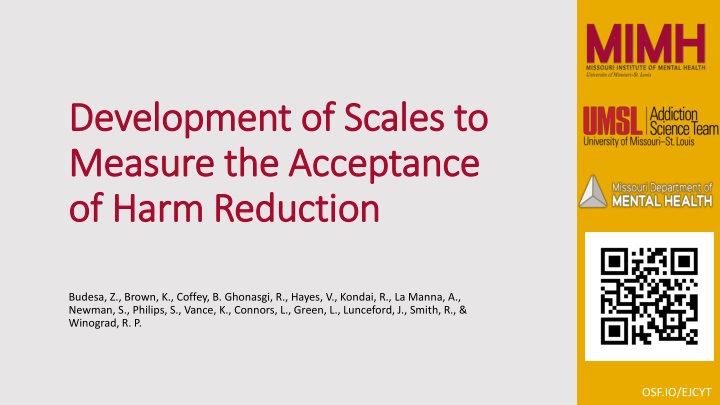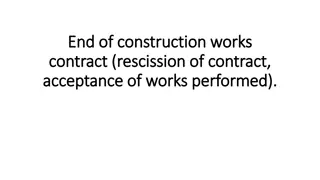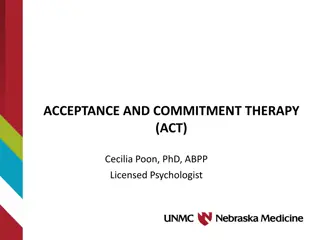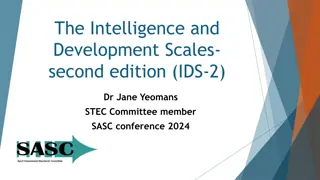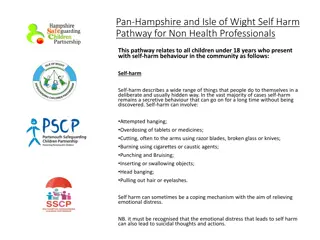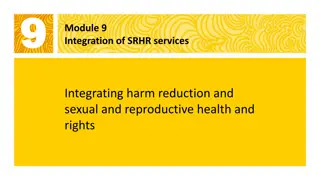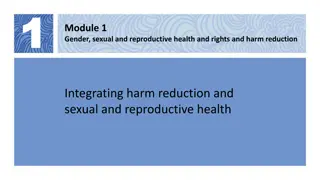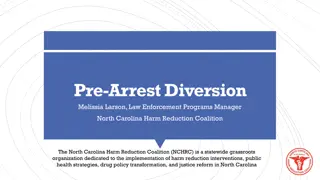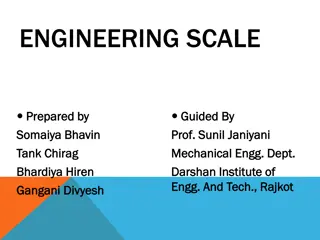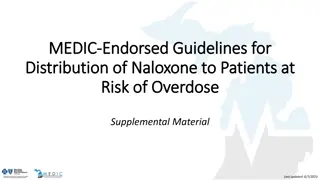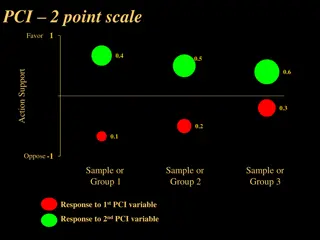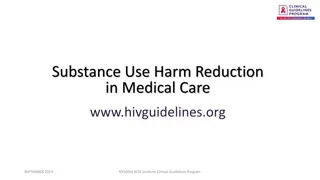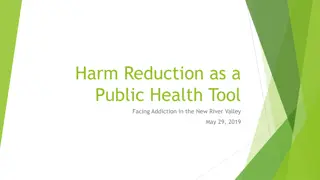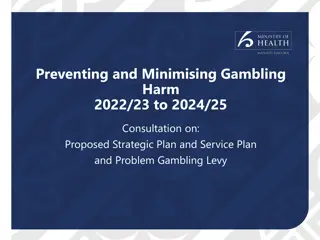Development and Evaluation of Harm Reduction Acceptance Scales
Development of scales to measure the acceptance of harm reduction is crucial for understanding public attitudes towards harm reduction strategies. This project focuses on creating valid and reliable scales through a systematic process involving item development, data collection, analysis, and refinement. Utilizing strategies and principles, researchers collected and evaluated data from different studies, highlighting the importance of such measurements in advancing harm reduction efforts. Recruitment via Prolific.com helped gather diverse samples for assessment. The initiative emphasized the necessity of assessing harm reduction acceptance for effective public health interventions.
Download Presentation

Please find below an Image/Link to download the presentation.
The content on the website is provided AS IS for your information and personal use only. It may not be sold, licensed, or shared on other websites without obtaining consent from the author.If you encounter any issues during the download, it is possible that the publisher has removed the file from their server.
You are allowed to download the files provided on this website for personal or commercial use, subject to the condition that they are used lawfully. All files are the property of their respective owners.
The content on the website is provided AS IS for your information and personal use only. It may not be sold, licensed, or shared on other websites without obtaining consent from the author.
E N D
Presentation Transcript
Development of Scales to Development of Scales to Measure the Acceptance Measure the Acceptance of Harm Reduction of Harm Reduction Budesa, Z., Brown, K., Coffey, B. Ghonasgi, R., Hayes, V., Kondai, R., La Manna, A., Newman, S., Philips, S., Vance, K., Connors, L., Green, L., Lunceford, J., Smith, R., & Winograd, R. P. OSF.IO/EJCYT
Harm Reduction Harm Reduction OSF.IO/EJCYT
Why Measure Harm Reduction Why Measure Harm Reduction Orientation? Orientation? OSF.IO/EJCYT
Single ordinal items (Wild et al., 2021) Focused on knowledge of harm reduction organizations (Baker et al., 2020) Single substance focus (Goddard, et al. 2023) Little validity evidence (Hofschulte, 2012) Single population (Sulzer et al., 2021) Narrow definition of harm reduction (Bonar & Rosenberg, 2010) Survey methods (MacCoun, 2013) No one uses them! Limitations of Limitations of Existing Existing Measures Measures OSF.IO/EJCYT
Item Examples Item Examples Strategies Police officers should have access to naloxone/NARCAN. Sobriety should not be a requirement to access public housing. Principles Drug use will always be part of society. Racism affects the health of people who use drugs. 5-point ordinal scale Strongly Disagree to Strongly Agree OSF.IO/EJCYT
The Process The Process Retained two scales Develop Items Collect more data (CFA & EFA) Strategies 8 Items Principles 7 Items Response Process Evaluation (3 Rounds) 45 Initial Items Analyze Refine items Collect data (EFA) Collect more data (CFA) Repeat Analyze Analyze OSF.IO/EJCYT
Recruitment Recruitment All samples recruited via Prolific.com General US-based sample Response Process Evaluation Study 1 N = 77 Study 2 N = 35 Study 3 N = 10 Study 1 EFA N = 301 Study 2 CFA & EFA N = 402 Study 3 CFA N = 393 OSF.IO/EJCYT
Closely Related Items Closely Related Items People who use drugs should . The general public should . Police officers should . Access to Naloxone safe injection supplies. safe inhalation supplies. People who use drugs should have access to OSF.IO/EJCYT
Closely Related Items Closely Related Items are an appropriate treatment option for people who use drugs. People who use drugs should be able to use [ ] for any length of time. Medications for Opioid Use Disorder People who use drugs should be involved . People in recovery from drug use should be involved . Involvement in Policy and Programs by Recovery Status OSF.IO/EJCYT
Psychometric Psychometric Statistics Statistics r = -0.07 [-0.16, 0.03] Strategies Mean = 3.5 SD = 0.9 Principles Mean = 2.7 SD = 0.4 OSF.IO/EJCYT
Next Steps Next Steps Validity & Reliability Evidence Relationships with stigma, closeness with people who use drugs, experience with substance use diagnoses Test-retest reliability Amenability to intervention Measurement invariance OSF.IO/EJCYT
Development of Scales to Development of Scales to Measure the Acceptance Measure the Acceptance of Harm Reduction of Harm Reduction Budesa, Z., Brown, K., Coffey, B. Ghonasgi, R., Hayes, V., Kondai, R., La Manna, A., Newman, S., Philips, S., Vance, K., Connors, L., Green, L., Lunceford, J., Smith, R., & Winograd, R. P. OSF.IO/EJCYT
